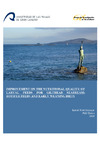Please use this identifier to cite or link to this item:
https://accedacris.ulpgc.es/jspui/handle/10553/76612
| Title: | Improvement On The Nutritional Quality Of Larval Feeds For Gilthead Seabream: Rotifer Feeds And Early Weaning Diets | Authors: | Eryalçin, Kamil Mert | Director: | Izquierdo López, María Soledad Castro Alonso, Pedro Luis |
UNESCO Clasification: | 310502 Piscicultura | Keywords: | Gilthead seabream Diets |
Issue Date: | 2019 | Abstract: | Aquaculture is rapidly growing in the Mediterranean region. Particularly, gilthead sea bream (Sparus aurata) and sea bass (Dicentrarchus labrax) are the two most important marine fish species commercially produced, together with two new species the meagre (Argyrosomus regius) and the Senegalese sole (Solea senegalensis). However, a weak point in marine fish production is still larviculture and the increase in health and survival to produce high quality juveniles. Marine fish larvae are poorly developed at first feeding and their performance is directly affected by the nutritional quality of live feeds and weaning diets. Fatty acids, amino acids, vitamins and minerals should be well balanced and in sufficient amounts in the diets in order to fulfill the whole needs of newly hatched larvae. Marine food web chains start from microalgae, main producers of essential nutrients for marine fish larvae. The nutritional values of wild live preys such as copepods are superior to hatchery live feeds. Under this point of view, the aim of the present thesis was to optimize the nutritional quality of live preys and early weaning diets for marine fish. For that purpose, the effect of different commercial rotifer diets versus microalgae on production performance and nutritional composition of rotifers have been studied. The results showed that, Nannochloropsis oculata biomass was highly nutritious and very efficient for rotifer production in the form of spray-dried (Chapter 1). In dry diets for marine fish larvae, fish oil and fishmeal are highly nutritious but limited ingredients. Therefore, other ingredients must be investigated and used for sustainable growth of larviculture. Instead of fish oil, microalgae oil or single cell oils are highly recommended due to a more simple composition of fatty acids and the lack of pollutants. Essential fatty acids originated from different microalgae can effectively replace fish oil. These microorganisms can produce DHA and were utilized to replace fish oil in weaning diets for gilthead seabream. The results have shown that dietary supplementation of EPA is also necessary to further promote larval growth performance (Chapter 2 & 3). Dietary inclusion of certain additives such as immunestimulants may also improve larval performance. Inclusion of mannan oligosaccharides in larval diets improved dietary lipids utilization increasing deposition of essential fatty acids in larval tissues, as well as growth, particularly at a dietary inclusion level of 1.5% MOS (Chapter 4). Recently, the importance of trace mineral nutrition in marine fish larvae has been emphasized. A study conducted with the supplementation of various minerals in early weaning diets for gilthead sea bream showed the importance of Cu, as well as Se and Zn on early weaning diets for gilthead sea bream, and the potential toxic effect of Mn (Chapter 5). | Description: | Programa de doctorado: Acuicultura Sostenible y Ecosistemas Marinos | Institute: | IU de Investigación en Acuicultura Sostenible y Ec | URI: | https://accedacris.ulpgc.es/handle/10553/76612 |
| Appears in Collections: | Tesis doctoral |
Page view(s)
314
checked on Sep 27, 2025
Download(s)
384
checked on Sep 27, 2025
Google ScholarTM
Check
Share
Export metadata
Items in accedaCRIS are protected by copyright, with all rights reserved, unless otherwise indicated.
